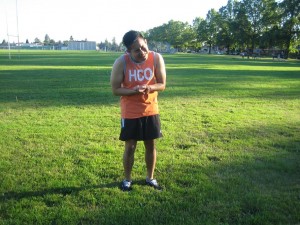A sprained finger involves stretching or tearing of the ligaments that function in supporting the small joints of the fingers. Ligaments are strong bands of tissue that attaches the bones to each other. The ligaments of the fingers are prone to injuries especially when playing sports. Ligaments are strong fibers that attach the finger bones with one another and provide stability when the fingers are bending and straightened. Take note that ligament sprains happen when these joints are overstretched. Ligaments can be torn if an individual sustained a fracture.
[youtube url=”https://www.youtube.com/watch?v=hur_EmjYlMQ”]Causes
- A strong blow to the finger which causes it to bend excessively or in a wrong direction
- A sprained finger can happen during athletic activities when an athlete jams his/her fingers into another person or a piece of equipment.
- Falls on the hand
Symptoms
- There is pain especially when bending the finger and stressing the damaged finger.
- Sometimes, the joint are swollen
- Pain and tenderness of the affected finger

There is pain especially when bending the finger and stressing the damaged finger. - Limited mobility and movement of the finger
- Pain especially when moving the joint of the finger
- Instability of the finger when the damage caused is severe or there is complete rupture of the ligament.
Treatment
- Take a rest and avoid performing activities that causes pain.
- Apply an ice pack on the damaged finger for at least 15-20 minutes several times every day for the first 3 days after the injury. Do not allow the ice to stay in one position by moving on the affected finger in order to prevent ice burns.
- A sprained finger caused by partial tearing of ligament fibers needs medical help immediately. The damaged finger is immobilized for a longer period for up to 12 weeks and increasing the risk of making the finger becoming stiff permanently. After the first 3 days of healing, apply heat on the affected finger at least 15-20 minutes several times every day in order to increase the blood circulation and lessen pain and stiffness.
- In the severe phase, usually in the first 24-48 hours, compress the affected finger using an elastic bandage or small-sized compression bandaged helps to lessen the swelling.
- Once the swelling is minimized, tape the affected finger with the adjacent one for protection while the ligament heals. Protect the skin by placing a soft padding such as foam or felt between the fingers before buddy taping them together. The damaged finger should be buddy taped at least 2-4 weeks. If the injured finger causes pain after buddy taped, remove the tape and check for symptoms. Avoid splinting the affected finger and should be slightly bent and in a relaxed position for proper healing of the area.
- When the fingers can be moved, perform some mobility exercises in order to help restore the complete movement in the finger and eventually some strengthening exercises using putty or hand ball exercises to restore the strength of the affected finger.
